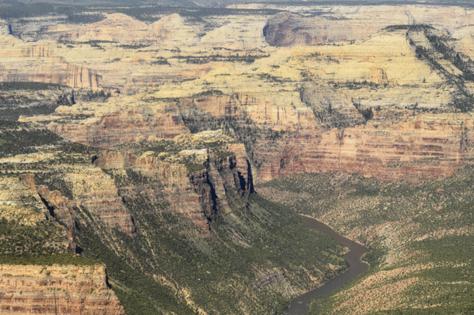New dog-sized dinosaur unearthed from Colorado rock formation
Published in News & Features
DENVER — A new dinosaur species unearthed from the famed Morrison Formation in Colorado has been identified, according to a journal article published last week in Royal Society Open Science.
Scientists have named the speedy, dog-sized dinosaur Enigmacursor mollyborthwickae, according to the article. Its skeleton, or what fossil hunters could find of it in Moffat County, is on display at London’s Natural History Museum.
Scientists said the dinosaur discovered was only about one meter long, but there are signs that it wasn’t fully grown, according to a news release from the museum.
The Morrison Formation of sedimentary rock from the Late Jurassic Period is named after the Colorado town but spans across the western United States, according to the National Park Service.
“While the Morrison Formation has been well-known for a long time, most of the focus has been on searching for the biggest and most impressive dinosaurs,” Susannah Maidment, a researcher with London’s Natural History Museum, said in the news release. “Smaller dinosaurs are often left behind, meaning there are probably many still in the ground.”
Maidment is also one of the lead authors of the Royal Society Open Science article.
The bones of Enigmacursor mollyborthwickae were unearthed on private Colorado land called the Skull Creek Estates near Dinosaur between 2021 and 2022, according to the article.
The fossils were then sold through a commercial dealer and eventually made their way to a London art gallery, which is how Maidment and her co-author, Paul Barrett, learned about them, according to the London museum.
Scientists said the partial skeleton had originally been classified as a Nanosaurus, a plant-eating dinosaur discovered in 1877.
As the Maidment and Barret began to look closer, they discovered that the Nanosaurus label was loosely defined and based more on preserved impressions of dinosaurs than physical bones, the news release stated.
“Now, however, we have found hundreds of small dinosaurs from all over the world and know that the fossils of Nanosaurus just aren’t that useful, let alone enough to name a species with,” Maidment stated. “As a result, it made sense to put them to one side and name Enigmacursor as a new species instead.”
Enigmacursor mollyborthwickae is likely one of many small dinosaurs out there waiting to be correctly classified in museum collections or unearthed from the ground, she added.
_____
©2025 MediaNews Group, Inc. Visit at denverpost.com. Distributed by Tribune Content Agency, LLC.







Comments